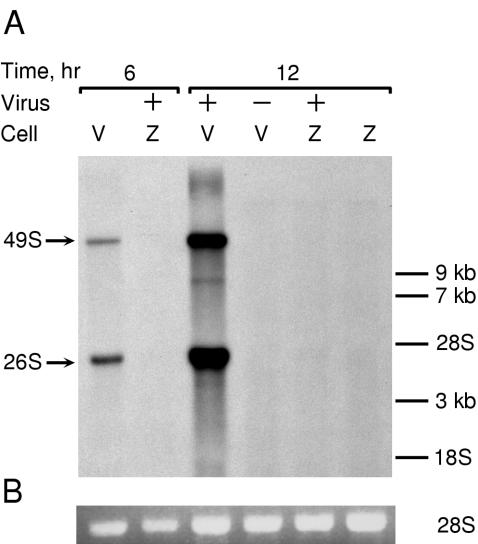FIG. 7.
ZAP blocks the production of new plus strand genomic RNA. (A) Rat2-HA-Zeo (V) and Rat2-NZAP-Zeo (Z) cells were mock-infected (−) or infected (+) with SIN (MOI = 5, as titered on BHK-J cells) in the presence of actinomycin D (1 μg/ml) as described in Materials and Methods. After infection, [3H]uridine was added, and RNA was harvested at the indicated times after infection. Total RNA (5 μg) was size separated by denaturing gel electrophoresis, and, after ethidium bromide staining, the gel was treated for fluorography and exposed to film for 28 h at −80°C. On prolonged exposure (1 week) a faint 49S signal, likely due to a small percentage of permissive cells in the culture, can be seen in infected Rat2-NZAP-Zeo cells harvested at 12 h. Migration of RNA size markers is shown on the right. Arrows, locations of the SIN genomic (49S) and subgenomic (26S) RNAs. (B) Ethidium bromide staining of ribosomal 28S RNA prior to fluorography indicates equal loading of RNA on the gel. The results are representative of two independent experiments.

